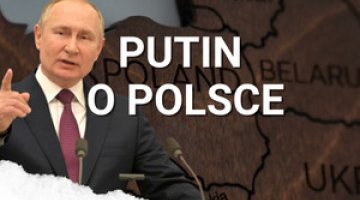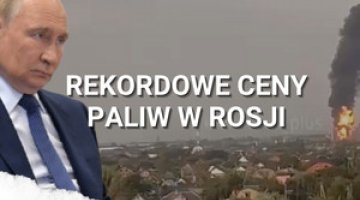Russia on the information war’s nuclear frontline
President Vladimir Putin’s decree of 2 June, entitled ‘On the foundations of the state policy of the Russian Federation in the field of nuclear deterrence’ has been described as a document on defence planning at the strategic level. It presents the Russian Federation’s position on questions of nuclear deterrence, on military threats which Russia intends to neutralise by means of its nuclear deterrent, as well as the conditions for Russia’s use of nuclear weapons. The guarantee that a nuclear deterrence could prevent a potential opponent from using aggression against the Russian Federation and/or its allies has been recognised as one of the state’s priorities. The nuclear deterrence is presented in this document as a set of activities in the political, military, diplomatic, economic and information fields aimed at preventing aggression, and in the event of an armed conflict, at halting escalation and ending it on terms acceptable to Russia. By seeing nuclear weapons only as a deterrent, the Kremlin does not rule out their use in situations it describes as extreme and forced upon it. It also highlights the legal regulation of the principles of nuclear deterrence in the legislation of the Russian Federation (starting from the constitution), and declares its respect for international law.
The wording of point 9 in chapter 2 (‘The essence of nuclear deterrence’) should be considered significant; it states that the main purpose of the nuclear deterrent is to ensure that the potential opponent understands that retaliation in the event of aggression against Russia and/or its allies is inevitable, especially in combination with the subsequent points in this chapter. These list the actions described as military threats which Russia intends to neutralise by means of its nuclear deterrent (point 12; see more in the commentary).
The nuclear deterrent is applied to those countries and military alliances that consider Russia as a potential opponent, and which possess nuclear weapons or other weapons of mass destruction, or have “a significant combat potential of conventional forces” (point 13). Among the principles of the nuclear deterrence, the abovementioned respect for international law dominates, as does a kind of minimalism according to which the Russian potential for nuclear deterrence is, in the opinion of the document’s authors, proportional to the threats to the state, and is kept at the lowest level necessary to perform the tasks. In the summary of chapter 2, Russia recalls that its nuclear deterrent includes land, sea and air components (without giving any further details); this is the only reference to its own nuclear potential in the entire text.
In chapter 3, which presents the conditions when Russia would use nuclear weapons, the provisions of the Russian Federation’s Military Doctrine were cited; this doctrine has been in operation for two decades already (starting with the document of 2000, which has been amended several times, , but without any major changes in its structure and content). According to them, Russia may also respond with a nuclear attack if it considers that its existence is under threat as a result of conventional conflict (the condition of a nuclear strike on the Russian Federation need not be met). Among the detailed conditions for the use of nuclear weapons listed therein, it is worth mentioning that the basis for Russian use of nuclear weapons is the opponent’s impact (of an unspecified nature) on critical elements of state or military infrastructure whose neutralisation would prevent Russia from carrying out a nuclear retaliation. The chapter ends with an unprecedented provision (point 20), according to which the President of the Russian Federation may notify other states or international organisations of the intention to use nuclear weapons, the decision to use them, or the fact of their use.
The summary chapter states that the federal authorities are responsible for organising the plans for nuclear deterrence (the President of the Russian Federation, the Government of the Russian Federation, the Security Council of the Russian Federation and the Ministry of Defence of the Russian Federation), and also (in an extremely general way) defines their tasks in this regard.
Commentary
- It is difficult to consider this document as the basis for defence planning, despite its strategic importance in this matter. The first reason for this is the extremely vague and imprecise wording in the areas in which it could be useful in the planning process, i.e. in terms of defining the threats to the Russian nuclear deterrent and the conditions for Russia’s use of nuclear weapons. The second reason is the almost complete lack of reference to its own nuclear potential, except for the mention that it consists of three components. It should be remembered that this statement is true only in relation to the so-called strategic nuclear forces; the document completely omits the issue of Russian tactical nuclear weapons, despite the hints on this subject given in the points discussing the external threat (i.e. the possession or use of tactical nuclear weapons by a potential opponent of Russia: that is, according to the authors of the document, “a country that perceives Russia as a potential opponent”). The document does not contain any information on either the actual structure of Russia’s nuclear potential (which in large part is already known), the general plan for its use, or an outline for the further development of the Russian Armed Forces’ nuclear component (especially as the list of threats includes new generations of weapons and the potential militarisation of space). This means that the document has no practical significance from a military point of view.
- It is appropriate to consider the provisions of the part of the document which the authors of this analysis treat in greatest detail, and which is also most important from the perspective of its external addressees, including Poland; that is, the part concerning the military threats that Russia’s nuclear deterrent is intended to neutralise. Whereas the last two points (on the proliferation of nuclear weapons and their deployment on the territories of non-nuclear states) should be seen as relatively understandable, being fairly traditional in nature (with roots in the Cold War), the first four describe how Russia really sees the threats which would justify the use of their nuclear potential.
- The build-up of conventional forces containing nuclear weapons (assuming the existence of tactical nuclear weapons) on the territories of countries bordering Russia and its allies and the adjacent maritime areas may be compared to the majority of modern groups of conventional forces and armaments typical of most armies, at least on the European continent. In other words, it seems reasonable to understand that Russia perceives as a threat any relatively modern (i.e. as technologically advanced, at least, as the level of the 1960s, when conventional warfare – artillery, tactical air forces – began to be adapted for the use of nuclear arms) group of conventional forces in the states and territorial waters bordering its territory.
- Similarly, the document sees a threat in the form of the deployment by states which perceive Russia as a potential opponent of anti-missile systems, ballistic and cruise missiles, as well as precision and hypersonic weapons, combat unmanned aerial vehicles and directed energy weapons. The most important aspect of this point is the inclusion of modern non-nuclear precision weapons on the list of modern offensive weapons; this means that Russia considers the possession by potentially hostile states of any kind of guided weapons, including portable anti-aircraft and anti-tank systems, as a threat which could potentially result in a nuclear strike.
- The subsection in which the deployment of missile defence and offensive weapon systems in space is indicated as a threat should be directly understood as an act of rivalry with the United States, and also – depending on how one perceives the potential of the Russian military-industrial complex – a reluctant admission by Russia that its hopes of competing with the US are limited in this respect; or as an attempt to mislead so-called global public opinion regarding Russia’s approach to the militarisation of space (by the way, Russia has been developing its own Space Forces, which are currently linked to the Air Force, for two decades longer than the United States). It should be emphasised that there are even more such clear allusions in the document to the US and NATO, which Russia perceives as an instrument of US influence – e.g. to expand nuclear sharing or deploy US missile systems in Europe. Wherever ‘organisations’ or ‘coalitions’ are mentioned, the authors of the document are de facto referring to NATO.
- The provision on the possession of nuclear weapons and other weapons of mass destruction that can be used against Russia and/or its allies, as well as the means of delivery, should be considered as totally imprecise, and thus applicable to practically any state which possesses weapons of mass destruction. It is worth emphasising that in this point Russia does not indicate that it is referring to those countries that perceive Russia as a potential opponent, although such a clarification does appear in earlier points.
- According to this document, Russia perceives practically any manifestation of activity using relatively modern weapons as a military threat intended to neutralise its nuclear deterrent. Therefore, it should be assumed that the only condition for Russia’s use of nuclear weapons is that the Russian government takes the appropriate decision, or at least creates such an impression among international public opinion, which seems to be the document’s only real audience. The essence of the Russian deterrent, or rather the Russian threats , is not its nuclear potential, but its psychological impact, and (more broadly) an element of its information warfare. This is also indicated in what is probably the strangest point of the entire document, according to which the President of the Russian Federation reserves the right to notify other countries of Russia’s post factum use of nuclear weapons.
- The basic objectives of this decree are to raise concern among the political elites and public opinion in NATO countries, and to suggest that any reaction to Russia’s aggressive moves may lead to a crisis, or even armed conflict, which could also potentially result in the use of nuclear weapons. Therefore, it is probably no accident that this document has appeared during a lively debate on several important problems of European and global security: the possibility that the US may not extend the New START treaty with Russia on the further reduction of strategic nuclear weapons, the future of the nuclear sharing program in NATO, and the Alliance’s response to Russia’s violation of the Intermediate-Range Nuclear Forces Treaty(INF). In this context, the publication of this document may be seen as a gesture of indirect support from Moscow for those (mostly in Europe) who support a policy of normalising relations and cooperating with Russia, or of concluding new disarmament agreements with it – agreements in which the US might not participate.





